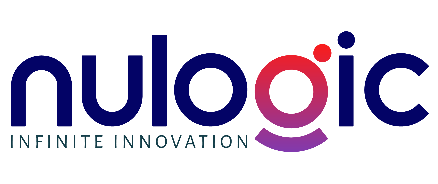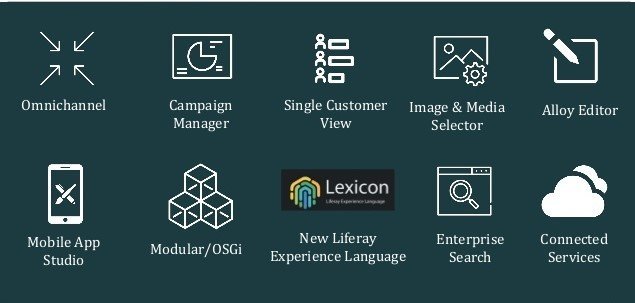Successful digital businesses require platforms that are built on solid, reliable IT. Liferay DXP delivers features like modular architecture, a powerful search engine, and advanced tools for testing and upgrades.
Integration Framework
Liferay DXP is a central presentation layer platform for integrating content and services from the back end or legacy applications. Liferay DXP supports multiple methods to integrate, including SOAP, REST, RSS, as well as proprietary APIs.
Frameworks Support
Support for popular JavaScript frameworks such as Angular, Vue.js, React and modern JavaScript workflows are included out-of-the-box (OOTB). Java frameworks such as JSF, SpringMVC, Vaadin are supported.
Modularity
Liferay provides a highly modular architecture that allows for greater extensibility, stability, and flexibility. Developers can enjoy an elegant development model based on OSGi standards. Modularity leads to many benefits such as:
- Greater flexibility including the ability to remove unused modules.
- Faster implementation of new features with users getting new modules as they’re ready rather than at the next GA release from Liferay.
- Reduced complexity with greater stability since updates and bug fixes are delivered independently and routinely.
- Quicker deployment since modules can be installed, uninstalled, started, or updated all while running Liferay DXP.
Liferay DXP gives businesses the ability to manage backend systems through powerful administration interface tools along with a flexible, modular architecture that enables agile growth with user needs. Key functionality includes site administration, identity management, search and more
Multitenancy and Virtual Hosting
Multiple virtual instances serving different groups of users with different domains can be administered in a single instance of Liferay DXP, leading to cost savings and operational efficiency for your organization. Enterprises have the ability to organize users by business-defined categories such as departments, geographies, or offices, as well as by cross-departmental teams and workgroups. Each organization and site can inherit or define its own permissions and administer user, group, and role management for the various applications it chooses to include. A single instance can be used to create many websites quickly to create hosted websites within one Liferay deployment and each clone can have its own unique URL, custom theme, and design. For example, a single deployment could host www.companyA.com and www.companyB.com with completely different themes, pages, and applications
High Availability and Scalability
Maximize uptime while updating your clustered environment with rolling restarts, support for blue-green deployment, and cloud deployment through Liferay Cloud.
Search Administration
Easily manage and control indexing and other search engine features.
Simplified UI
Liferay DXP simplifies the user experience of internal, external, and channel websites —notably those that allow users to log in for personalized services or views and those that require a workflow approval process to update content and integrate or aggregate multiple existing services. Liferay DXP provides a presentation layer for integrating all enterprise systems into a single easy-to-use interface for end-users.
Auditing and Optimization
To help administrators monitor the platform’s performance and better optimize resources, Liferay DXP gives administrators access to key performance statistics (hits/page, average time/hit, maximum time per request, and more) for all applications and pages. Meanwhile, our Auditing feature allows administrators to track and manage user activity within the platform.
Clustering and Performance Monitoring
Liferay DXP supports clustering at any combination of tiers (presentation, service, business logic, and database), advanced caching and performance monitoring support (JMX, Java profiling, and more).
Single Page Applications
Users experience faster loading and greater performance on the Liferay platform through Single Page Applications, a technology that provides dynamic and responsive web experiences by taking only the parts of a page that need to be loaded rather than reloading the entire page. This can be achieved in Liferay DXP through Senna.js, a SPA engine.
Development Standards and Technologies
AJAX, iCalendar, Microformat, JSR-362 (Portlet 3.0), JSR-371 (MVC1.0), JSR-344 (JSF 2.2), Spring 3.0, CMIS 1.0/1.1, Hibernate collection of projects, OSGi Core 6.0 and SAML 2.0.
Identity Management and Access Control Liferay DXP give businesses the ability to connect backend systems through integration along with a flexible, modular architecture that enables agile growth with user needs. Key functionality includes site administration, identity management, search, and more.
Security
Liferay DXP is thoroughly tested for security issues through White Hat Security, a leading provider of application risk assessment and management services. This independent third-party security audit means that Liferay DXP has successfully undergone rigorous testing based on the most widely accepted and comprehensive methods and that the platform meets customer requirements for addressing security issues in an effective and proactive manner. In addition, Liferay DXP is developed according to secure coding best practices and guidelines such as the OWASP Top 10 and the CWE/SANS Top 25. Our continuous security testing process includes regular security code reviews, penetration testing by ethical hacking firms, continuous white and black box security scans from third-party firms, and continuous vulnerability monitoring of third-party libraries included in Liferay DXP. Whenever new potential security vulnerabilities are found by Liferay’s security team, customers are notified and provided with a security update or fix pack.
Data Protection
Data protection tools in Liferay DXP help companies address GDPR and other privacy regulations and maintain control over how their platform manages user data. Companies can erase a user’s personal data and export a user’s personal data in a machine-readable format upon request. For data erasure, administrators can review content that potentially contains personal information and edit or delete as needed through a simple interface. Both tools include APIs for third-party apps to implement this feature or override the default behavior for out-of-the-box apps. The management dashboard allows for simplified bulk deletion, anonymization, and filtering and scoping abilities for the greater context in personal data review. Administrators are informed of which applications will automatically delete or anonymize data during the auto anonymization process.
Author: Kumar Swamy
Senior Software Engineer at NU Technology Inc
Original post: https://www.linkedin.com/pulse/liferay-dxp-features-benefits-e-commerce-kumar-swamy/



